100 Fascinating, Fun, and Strange Facts about Paris
Fact: Paris is one of the most famous tourist destinations in the world. This popular city known for its culture, landmarks, cuisine, and museums is the centre of finance, fashion, science, and arts in France. Read on to discover over 100 Paris facts, that are both highly engaging and entertaining, whether for interest sake or in preparation of an upcoming trip…

Bienvenue a Paris!
Even though Paris is well known around the world, a city as old as this one is guaranteed to have a handful of compelling stories, hidden gems, and captivatingly interesting facts about Paris worth knowing.
What is Paris famous for?
The city is world renowned for its large number of cultural and historic sites, centuries-old churches, rich art, museums, palaces, gardens, prominent landmarks, and of course the Eiffel Tower. Famous as the fashion capital of the world, it is also known for its cafe culture, innovative eateries, delicious cuisine, and French pastries. In addition, this beautiful metropolis along a picturesque river is said to be boldly romantic as the city of love that engenders daydreams.
The City of Lights is however, more than a collection of famous landmarks, major museums, and picturesque streets. With its long history and rich culture, Paris is fascinating.
Learn about the city, its traditions, its customs, its people, and its secrets with these 100 facts about Paris France! I’m almost certain you’ll learn a lot of things about Paris…
Find the complete list of fun facts in Paris ⇓
Let’s get into it….
Here are 100 things about Paris to know.
>> Discover more information on Paris. Read next:
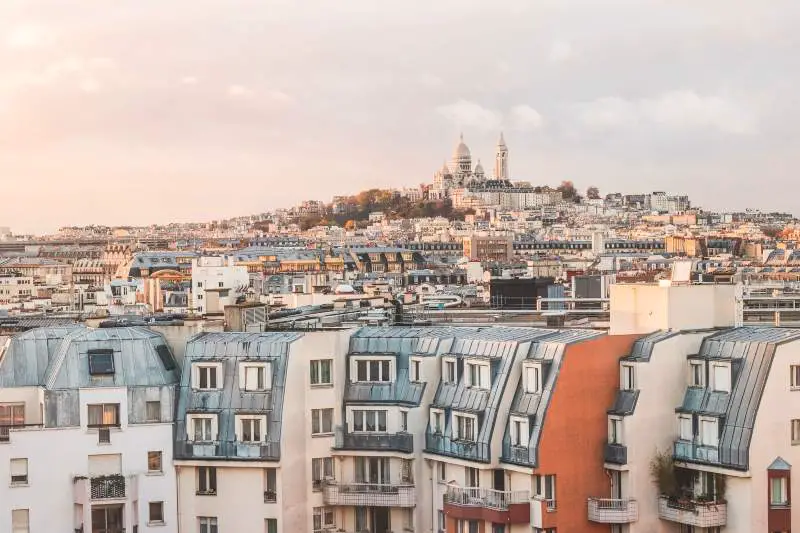
Quick Paris Facts
Capital city of France
Location: Northern central France along the Seine River
Continent: Europe
Coordinates: 48.8566° N, 2.3522° E
Official Language: French
Population: 2,102,650 (May 2023)
11,208,440 if the suburbs are included
National Federation Holiday: July 14 (Bastille Day)
Population density: 119 per square kilometres (309 people per square mile)
Median age: 42.3 years old
Total area: 105,4 square kilometres (40,7 square miles) including metropolitan area 2,300 square km (890 square miles)
Lowest point: 24 meters (80 feet) above sea level along the Seine
Highest point: 148 meters (486 feet) above sea level at Belleville
System of government: Democracy
Religion: Christianity (Roman Catholics 61%)
GDP: €909 billion ($984 billion)
Currency: Euro (previously until 2002 French Franc)
International dialling code: +33
Time Zone: GMT+2 Central European
I’m sure it’s no surprise to hear that…
Paris is one of the most visited cities in the world
Every year, over 45 million people from around the world travel to the city to experience its sights, sounds, and tastes – making it one of the most popular destinations.
Did you know that…
There are 38 cities named “Paris” across the world
… from Panama, to South Africa and the United States. However, none compare to thé Paris.
One fifth of the entire population of France lives in the Paris metropolitan area
Since its founding, the population of Paris has grown from a couple thousand to over two million Parisians, going up and down over the centuries.
The population of central Paris is currently at 2,102,650. The greater metropolitan area of Paris, the region of Ile de France, has an estimated population of over 11 million people.
Did you know?
Paris gave the world many everyday things:
- The metric system
- Street lights
- Photography
- The concept of a restaurant
- SCUBA gear
- Going to the movies
- Stethoscope
- Chemistry
- Car racing
- Style and haute couture
>> Read on to discover all the details about facts in Paris
>> Read next in this series:
- Is Bora Bora a country?
- 100+ fascinating facts about Mexico to know before you go
- Interesting Dominican Republic facts to know about this Caribbean island
- Dubai facts: From the weird to the wonderful
- Super cool facts about Hawaii worth knowing
- Mind blowing facts about Australia
Interesting Facts about Paris
>> I could really go into detail and give you 1,000 facts about Paris information, but here are the best ones.
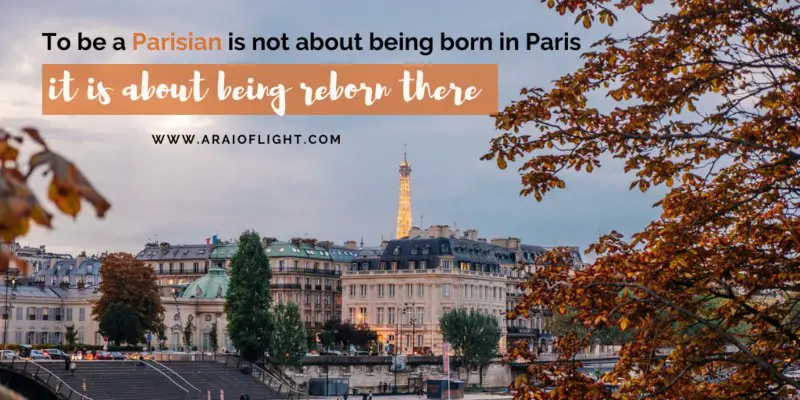
Paris is often referred to as the City of Light
Or “La Ville Lumière” in French. How did it get this name?
The “City of Light” was a result of the the city becoming the epicentre for the exchange of ideas and the home to a large number of intellectuals.
For centuries, Paris has attracted scientists and philosophers to writers and and artists who have been drawn to this city and have made a large number of contributions to society from the 17th century and beyond. Lights, in this case refers to the high concentration of intellectuals living in Paris.
Speaking of light, a fun fact about Paris is that…
It was the very first city in the world to contain street lights
Way back in the 1500s, residents of this city who lived in a house facing a street were required by law to place a lamp in the window so that people in the streets could see in the dark.
In the 1860s, 56,000 gas lamps were placed around the city to illuminate its promenades and boulevards, presenting a striking nighttime view.
The city was also one of the very first to have electricity.
Paris goes by a lot of other names too
These include The City of Love, the City of Art, the Fashion Capital.
The Eiffel Tower wasn’t always popular and was meant to be temporary
Yeah, you read that right. Built in 1889 for the World’s Fair exhibition, the Eiffel Tower was meant to be demolished in 1909, 20 years after its inauguration. However, during this time, it gained popularity as well as its function for conducting wireless signals and radio waves.
When the plans for the tower were presented, it was referred to as a useless monstrosity by various intellectual figures accompanied by a petition of protest. Fortunately, the construction went ahead anyway.
To see every piece of artwork in the Louvre you’d need 35 days nonstop
This is because the museum lists a total of 460,000 pieces with “only” 35,000 available to the public on display which is only a fraction of the entire collection.
All distances from Paris are measured from a compass at Notre Dame
This small brass marks the centre of the city and from which all distances from Paris are measured. It is said to bring good luck to all who spin around on this star. To find this compass, it is located right outside the cathedral.
Speaking of Notre Dame, take note that:
The Notre Dame is the most visited monument/attraction in Paris and all of France
The Notre-Dame cathedral can be found in the heart of Paris on Ile de la Cité. Built between 1163 and 1345, the cathedral is over 800 years old and is widely considered to be the best example of French Gothic architecture.
It is built on the ruins of two historic churches and one ancient Gallo-Roman temple with the foundation stone laid by Pope Alexander III back in the 12th century. Everyone from royalty to resident contributed to the construction of the cathedral by way of money, time, or labour.
Before the recent fire in 2019, it was visited by more than 14 million visitors each year. This makes it the most visited sight in Paris.
The main bell of Notre Dame weighs over 13 tons
Named Emmanuel, it is sounded for the main Catholic holidays and for other significant events. Speaking of bells, a lot of them from the cathedral have been melted down and used for artillery during the French Revolution.
Inside Notre Dame you will notice one of the oldest organs in the world, dating all the way back to 1330.
Paris is so pretty, so it should not come as a surprise to hear that…
There are on average around 10 films or commercial shoots happening in Paris every day
Despite this, no fees are charged to the film crew for shooting. The exceptions to this are when shooting scenes in a museum, swimming pool, or garden.
Paris holds the world record for least number of stop signs
And that number is 0. There was one stop sign somewhere in the 16th arrondissement, but that disappeared in 2014. The traffic rules state that cars on the right side always have the right-of-way at intersections.
Interesting to note that…
There is a statue of Liberty in Paris
Not just one, but five. The most famous of these can be found next to the Pont de l’Alma on an island in the middle of the Seine. It symbolises the friendship between France and the USA and faces the state of liberty in New York.
Historical Facts of Paris
>> Let’s go way back in time to take a look at some highly interesting facts of Paris history.
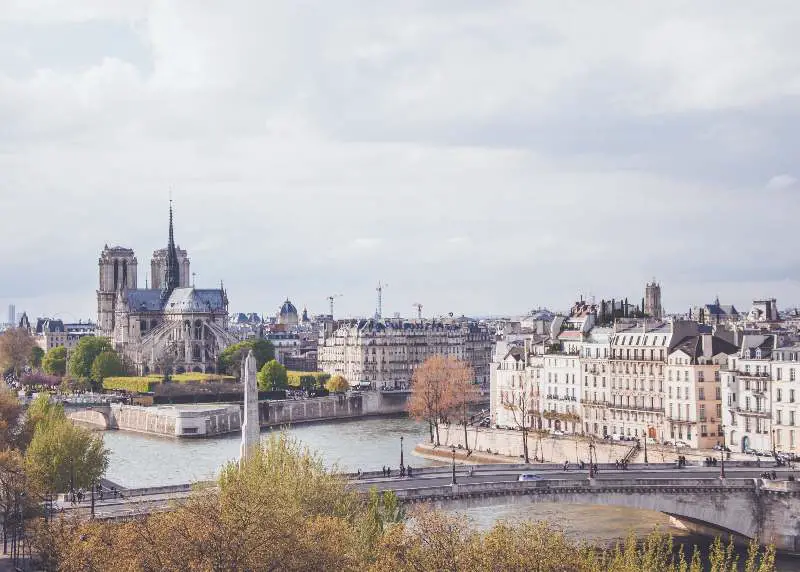
Paris is older than you think: 2,300 years
How old? Well, bones that were discovered in the Paris region date all the way back to 8000 BC.
The city began in the 3rd century BC when a Celtic tribe called the Parisii built a settlement on an island in the Seine (what is now Ile de la Cité) and on the banks of the river.
Ready for a little history lesson?
Paris was originally called Lutetia
During the year 52 BC, the Romans under the leadership of Julius Caesar, conquered the territory and built a town along the river, calling it Lutetia Parisiorum or “Lutetia of the Parisii.” It developed into a prosperous city with Roman baths, forums, temples, and theatres.
The city was Christianised in the 3rd century AD that became known according to its Latin name, Parisius. Following the collapse of the Roman Empire, it was occupied by Clovis I, the King of the Franks, who made it his capital in the year 508.
Paris officially became the capital of France in 987 AD.
Many, many years of turmoil, invasion and fires destroyed much of what was built during the Middle Ages, but you can still visit what little remains of that period like the Notre Dame and La Sainte Chapelle on Île de la Cité, the oldest areas of the city. A few timber houses, built in the 14th century, can be found in Le Marais, which was originally a swamp.
The French Renaissance period made Paris the center of art, architecture and science
This continued from the late 15th century up to the early 17th century and still remains to inspire people today.
Throughout history artists from around the world have made Paris their home
Just to name a few: Pablo Picasso, Salvador Dali, Claude Monet, Ernest Hemingway, James Joyce, Gertrude Stein, Marie Antoinette, Henri Matisse, Jean-Paul Sartre
The biggest festival in the city is Bastille Day on July 14
During the summer of 1789, Paris became the centre of the French Revolution and on July 14 a group got hold of the arsenal (including thousands of guns) at the Invalides and stormed the Bastille prison.
This was the first of a series of key actions by the Parisian people during the French Revolution. On July 15 the first independent Paris city council met in Hotel de Ville and elected a mayor.
Bastille Day is a celebration of this event and also one of the biggest holidays in France.
The event comprises a military parade along the Champs-Élysées, from the Arc de Triomphe to Place de la Concorde. This is followed by a flypast by the Patrouille de France and a colorful fireworks display in the evening, the most spectacular being the one at the La Tour Eiffel.
The construction of the Arc de Triomphe took 30 years to finish on the instruction of Napoleon
Commissioned in 1806, he wanted to build a grand triumphal arch to celebrate his troops, the Grand Armée. It was only completed in 1836 and stands 50 metres high and 45 metres wide.
You will find the tomb of the Unknown Soldier of World War I beneath the arch and engraved along the walls of the arch are the names of 558 French generals of the First French Empire.
Speaking of Napoleon, France’s only modern emperor, you may be interested to know that he was also responsible for completing the Louvre, building Rue de Rivoli, Elise de la Madeleine, and additionally for supplying Parisian households with fresh water.
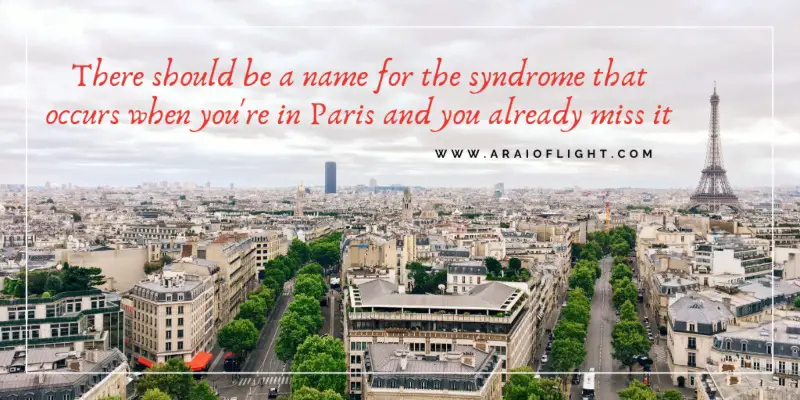
Tourism Facts in Paris
There are so many things about Paris that include iconic monuments, world-class museums, and historic sights. Top attractions include the Eiffel Tower, Notre Dame, the Basilica of Sacre Coeur, the Louvre Museum, and Arc de Triomphe.
Other places to visit are Sainte Chapelle, the Grand Palais, Jardin du Luxembourg, Musée d’Orsay, and Centre Pompidou.
With international spending exceeding $10 billion each year, the City of Paris is an important economic factor in French tourism.
Interestingly, the Greater Paris are has over 2,000 hotels with a total capacity of 120,000 rooms. The city is also very well known for its luxury and grand hotels, with a total of 85 five-star hotels. In addition, over 80,000 homes are registered with Airbnb.
Where to stay in Paris? Check out this list of the:
Hotels with amazing views of the Eiffel Tower
Did you know that…
The Eiffel Tower is NOT the most visited attraction in Paris
You want some numbers? Well, around 7 million people visit the Eiffel Tower each year. That is 25,000 visitors who get to enjoy the view from the top of the tower each day.
In comparison, the cathedral Notre Dame receives more than 14 million visitors per year. This is followed by the Sacre Coeur, the Louvre, and the Eiffel Tower comes in at fourth place.
Here are some other interesting Paris facts about the Eiffel Tower:
It took 2 years, 2 months, and 5 days to complete la Tour Eiffel
This was made official on 31 March 1889. Comprising 18,000 pieces of iron and 2,5 million rivets, it weighs 10,100 tonnes.
How may elephants is that?
The tower was designed by Emile Nougueier and Maurice Koechlin. How does Gustave Eiffel fit in? Well, he only bought the right to patent and invest in the tower. Why does he get all the credit?
At that time…
The Eiffel Tower was the tallest structure in the world
It held this title for 41 years, standing 324 metres high, until 1930 on completion of the Chrysler Building in New York City.
The Eiffel Tower changes height in extreme weather conditions
This usually happens in the summer with high temperatures causing the thermal expansion of the metal and resulting in a height difference of up to 6 inches or 18 cm.
The Eiffel Tower is the most valuable landmark in Europe
This world famous landmark has an estimated worth of 435 billion Euros to the French economy.
Repainting of the Eiffel Tower is done by hand
It takes 60 tons of paint. The tower has been painted 18 times since its initial construction, at an average of once every seven years.
Paint colours have ranged from red to yellow-brown to chestnut brown before the adoption of the current, specially mixed Eiffel Tower Brown in 1968.
It takes 1,665 steps to the top of the Eiffel Tower
Elevator anyone?
Strangely enough, Hitler who visited Paris during the WW II was never able to get to the top of the Eiffel as intended because the French cut the cables to the elevator as a symbol of defiance. If Hitler wanted to reach the top he would have had to climb those 1,665 steps and he chose not to.
Speaking of Hitler, shortly before the liberation of Paris, he gave the order to destroy the Eiffel Tower. Fortunately, the general in charge loved the city too much and decided to ignore this order.
It is illegal to distribute images of the Eiffel Tower at night
This is because the 20,000 light bulbs are considered a work of art with the copyright owned by the artist.
Disneyland Paris receives over 15 million visitors a year
But… Disneyland Paris, despite the name, is not located in Paris itself, but can be found about 30 km away from the centre of Paris in a place called Marne-la-Vallée. More than 15 million people visit the happiest place on Earth each year.
Fun Facts on Paris for kids
>> Find some really cool fun facts of Paris for kids below.
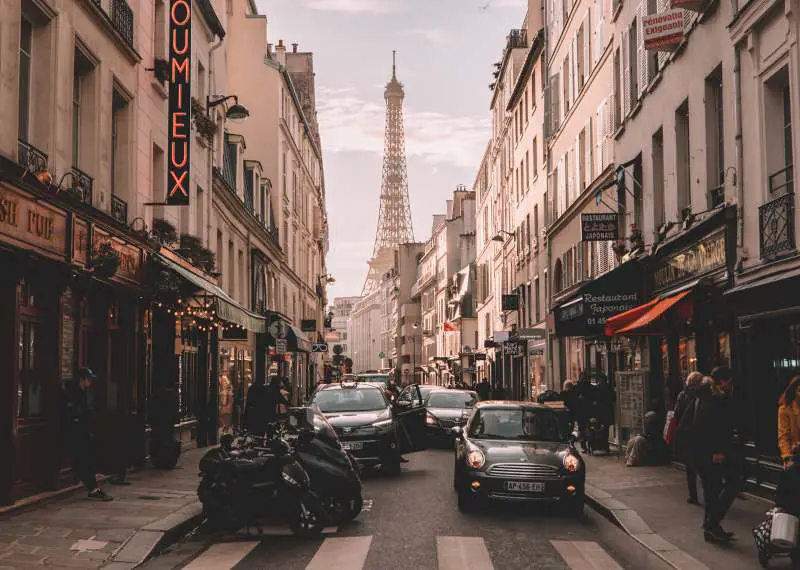
Paris is the capital and largest city in France
This city was actually the largest in the world between the 16th and 19th century.
Look at any map of Paris and you will notice that the city is oval shaped, with an area of 33,5 square miles, or 86,7 square kilometres (9 miles east to west and 6 miles north to south).
The Greater Paris region which includes the suburban areas covers an area of 4,661 square miles or 12,072 square kilometers. There is a highway, known as the Périphérique, that encircles the city and defines the city limits.
The main language of Paris is French
French is one of the most studied and most spoken languages in the world.
Speaking of French…
Paris is NOT the largest French-speaking city
You would think so, but this accolade actually belongs to Kinshasa of the Democratic Republic of Congo in Africa with more than 10 million French-speaking locals.
>> How to say thank you in French and around the world here
France shares a border with 6 countries
These include Germany, Italy, Belgium, Luxembourg, Spain, and Switzerland.
Paris is the main centre of commerce in France
With a GDP of over €700 billion, or 5% of the European Union’s GDP, the Greater Paris region is a major economic force not just in France, but in Europe and the world.
While on the topic of money… You should know that:
Paris is one of the most expensive cities to live
Paris, Singapore, Hong Kong, and New York consistently rank among the world’s overall most expensive cities to live according to the Economist Intelligence Unit Worldwide Cost of Living Survey.
Paris is a major rail, air, and road transport hub
The Gare du Nord is the busiest railway station in the world, outside of Japan.
The public transport network is the 4th largest in the world, comprising 302 metro stations. Opened in 1900, the Paris Metro is one of the most densely networked stations in the world, serving over 5 million travelers every day. This makes it the second busiest metro system in Europe, after the Moscow Metro.
‘Fluctuat Ner Mergitur’ is the motto of Paris
Which translates to “tossed but not sunk” in Latin, in reference to a ship on water.
Paris is the greenest city in France with 470,000 trees
Yes, someone(s) counted them all and every tree is accounted for. King Henry IV commissioned the first tree-lined streets way back in the 16th century.
Speaking of trees…
The oldest tree in Paris is an old locust tree that is over 400 years old. You will find this tree in Viviani André square opposite Notre Dame.
Paris also has more than 450 municipal parks, gardens, and green spaces spread across the city, spanning 3,000 hectares. Of these, the most famous are Jardin Tuileries and Jardin du Luxembourg.
Some amazing facts about the streets in Paris information…
There are 6,100 streets in Paris
The city’s shortest street, Rue des Degrés, in just 5,75 metres long.
Rue Vaugirard is the longest street, stretching 4,360 metres.
The city comprises 20 arrondissements (municipal districts) each with its own town hall and mayor. The numbering begins in the heart of the city and continues in a spiral fashion, ending to the far east.
The Champs-Élysées is the most famous street in Paris
Often described as the most beautiful avenue in the world, the Champs-Élysées was founded in 1616 by Marie de Medici as an extension of the Tuileries garden. It is 1,19 miles long and 230 ft wide.
Life in Paris revolves around the Champs-Elysees.
This tree-lined avenue filled with upmarket boutiques, restaurants, museums, and clubs is not just the most expensive street in Paris, but the most expensive real estate in Europe. It is not uncommon for rents of €13,255 per square metre per year.
The elevation of Paris is 35 metres or 114 feet
… above sea level. It is fairly flat for the most part, but the elevation does reach 130 metres (427 feet) above sea level on the hill of Montmartre where the Sacre Coeur.
This is not the highest point in the city of Paris, as incorrectly assumed. This attribute belongs to the hill of Belville, on Rue du Telegraphe, with an elevation of 148 meters or 486 feet, above sea level.
The lowest point in Paris is 24 meters, or 80 feet, above sea level, on the Seine River at the western edge of the city.
The average depth of the Seine is approximately 9,5 metres (31 ft). The river cuts an arc through the city, flowing from the southeast to the southwest.
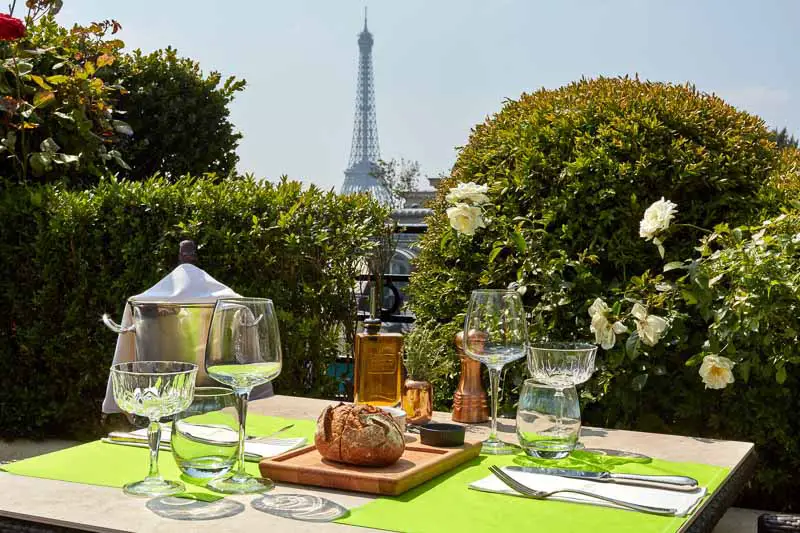
Facts about the food of Paris
A culinary capital of the world, Paris is a magnet for food lovers featuring a bevy of French regional as well as international cuisines. Wine and cheese are a huge part of French cuisine and according to French chef Jean Brillat-Savarin, “a meal without wine is like a day without sunshine.”
There are more than 9,000 restaurants and 1,780 bakeries in Paris
In fact, the first establishment to be known as a restaurant was in Paris. These 9,000 restaurants comprise cafes, bars, formal, as well as open terrace restaurants and you will be spoilt for choice with the sheer variety.
Of these, 70 are Michelin-starred restaurants with 10 being rated as Michelin three-star.
You know about all those delicious Parisian pastries, right? Well…
Paris has an official baguette law
This rule states the exact bread size and consistency of the dough for the finished product.
Each year a contest is held to find the best baguette maker in the city. The winner also gets the honour of supplying the presidential palace with bread during that year.
The oldest coffee shops in the world can be found in Paris
Located in the 6th arrondissement, Le Procope was founded in 1686, reviving the title of oldest café or coffee shop in the world.
From the oldest to the largest…
Paris has the largest wholesale food market
The Rungs International Market covers 6 square miles (2.3 square kilometers) and is said to house more than 2 million tons of fruit, vegetables, fish, and cheese each year.
Just don’t get lost here, ok.
In Paris you can find around 17,000 terraces to sit and have a drink
Many locals don’t have an outdoor area or backyard where they live, so the act of “être en terrasse” or being on a terrace is an important part of the day and the opportunity to get some fresh air and socialize. The city’s renowned terrace culture owes much to its 17,000 cafe terraces that line avenues and street corners.
>> Read next: 35 incredibly weird foods around the world
including snails in Paris
Culture in Paris Facts
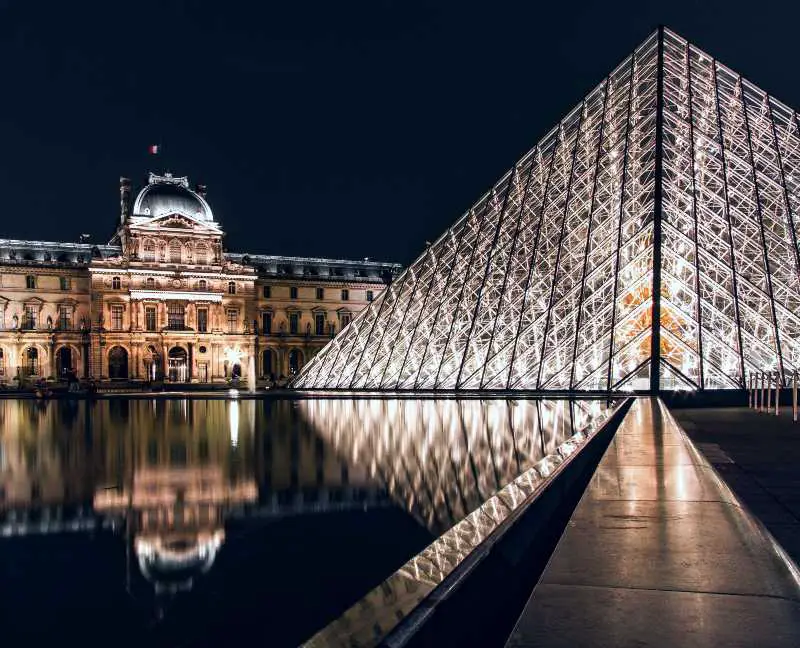
Paris is home to over 170 museums
These institutions showcase treasures in art, science, photography, sculpture and everything in-between. From the world famous Louvre to the less known, even strange museums, the likes of the Museum of Perfume, the Smoking Museum, and the Museum of Magic.
Don’t miss a visit to Musee d’Orsay for its collection of French Impressionist works and Musee de l’Orangerie for a glimpse of Monet’s famous Lilies.
Let’s talk about a couple facts about the Louvre in Paris
The Louvre is the most visited art museum in the world
… with over 9,6 million visitors each year.
It is also the most famous and the biggest museum in the world. You should know that…
15,000 people visit the Louvre in Paris each day. Yes, every day.
It was not always a museum. It was built as a fortress in 1190 and later became a royal palace. When the royals upgraded to the Palace Versailles, the Louvre became a museum in 1793.
During the Second World War just before the invasion of Paris by the Nazi’s, the Louvre was emptied and its contents were circulated among the elite citizens of France, who secretly kept them in their houses.
The most famous piece in the Louvre is the Mona Lisa, insured for a record breaking $100 million
This world famous portrait painting by Leonardo da Vinci is well protected behind a bullet-proof grass within its own climate-controlled room.
The Mona Lisa was stolen in 1911 and went missing for two years, making it the greatest art theft of the 20th century. It was found when the thief tried to sell it to an art dealer in Italy.
Paris has the highest number of libraries in the world
This number currently stands at 830 libraries around the city. That’s a whole lot of books, right?
The oldest and grandest of these is the Bibliothèque Mazarine.
Shakespeare & Company is the most famous English-language bookshop in Paris. Named after the original store, first shut down by the nazis, which published the classic Ulysses in 1922.
Place de la Concorde is one of the biggest sundials in the world
The 23 metre-high Egyptian obelisk standing in the centre of the square, originally stood by the Luxor Temple in Egypt, and now functions as a giant sundial. The Roman numerals on the pavement of the Place de la Concorde are the numbers of a sundial, and the shadow of the obelisk functions to give the time throughout the day.
The majority of residents identify as Roman Catholic
French census data does not require any information about religious affiliation, but at the beginning of the 20th century Paris was the largest Catholic city in the world. According to the latest survey, 61% of Parisians are Roman Catholic, 7% identify as Muslim, 4% as Protestants, 2% as Jewish, and 26% without religion.
Notre Dame one of the most visited religious buildings in the world
It is affectionately referred to as “Our Lady.” Here are other interesting Paris facts about Notre Dame.
No buildings are allowed to exceed six stories in Paris
This is according to the law, pour que tout le monde ait du soleil, which roughly translates to – so that all have sunshine.
The First Tower, located in the business district of La Défense, is the tallest building in France standing at 231 metres.
There are a total of 37 bridges over the Seine in Paris
These include 2 rail bridges, 4 walkways, and 31 road bridges. The widest point in Paris across the Seine River is around 200 metres and the narrowest point is nearly 30 metres.
Something to know about Paris
The oldest existing bridge over the Seine River in the city is the Pont Neuf
This stone bridge connecting Île de la Cité with the rest of Paris actually means, “New Bridge” named so by King Henry III, who ordered its construction in 1578.
He named this the new bridge to distinguish it from other older bridges at the time and also because it had modern features for its time like being the first bridge to be made out of stone, the first bridge with pavements separating traffic and pedestrians and also the first one built without houses on it.
Speaking of bridges…
The famous love-locks Paris bridge no longer exists
Well the pedestrian bridge, Pont des Arts, is still there, but all the locks have been removed for safety reasons. The 1 million locks attached to the bridge, weighing 45 tons, were causing structural damage to the bridge and subsequently removed.
The city authorities received strong criticism for this decision as the bridge was considered a symbol of the city.
Don’t worry, there are other love monuments around the city still, like the I Love You Wall in Montmartre. This art project by Claire Kito and Frederic Baron has the phrase, “I love you” painted on it 311 times in 250 languages.
The Montmartre district in the 18th arr. is the Bohemian neighborhood, historically renowned for attracting musicians, artists, poets, writers, and other creatives. The church of Sacré-Coeur is the focus of this cool, artsy district. Don’t miss exploring the cobble streets and corners of Montmartre when visiting Paris.
It is the fashion capital of the world, and with good reason….
The industry of fashion began in Paris
Louis XIV had high demand for good looking garments. Members of his court and the rich in society also wanted in on some of this action. Thus, this demand launched the giant network of fashion merchandisers, designers, and merchants.
As per an unwritten law in France…
Every city must have a street named after Victor Hugo
In Paris, this street can be found in the 16th arrondissement where the Les Misérables author lived.
The Tour de France ends on the Champs-Élysée in Paris
The world famous Tour de France ends on this main street in Paris each year.
Fun facts about Paris France
–> Continue reading to discover a couple of Paris fun facts.
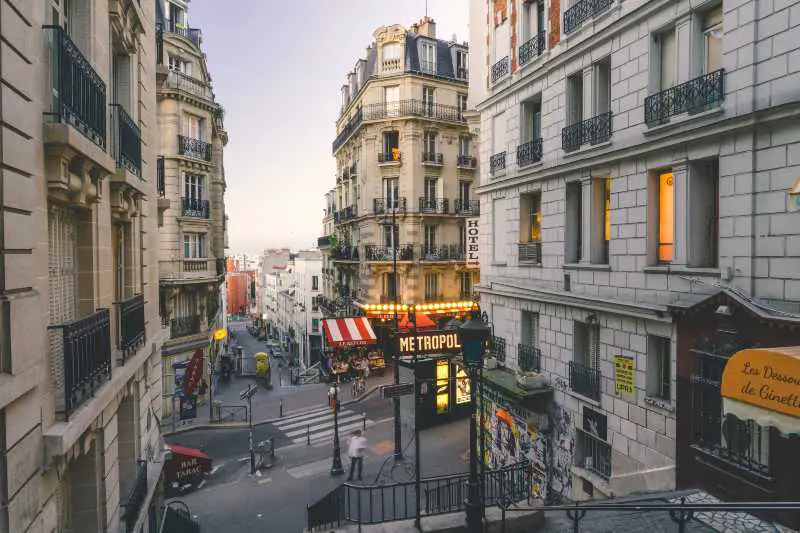
There are more dogs than kids in Paris
This number stands at over 300,000, far outnumbering the number of children.
Each summer the banks of the Seine turn into a beach
This concept of tons of sand, beach chairs, volleyball nets, beach songs, and food stalls, called Paris Plages was started in 2002 as a place for those who could not afford or don’t have the time to take a summer vacation.
It has now become a popular hangout spot for all Parisians.
The very first photo taken of a person took place in Paris
This photo was taken by Louis Daguerre on a street in Paris in 1839. He succeeded where others could not.
It was such a significant improvement that his process is considered the birth of practical photography. And thus, began the photography industry.
You should know that… Going to the movies started here:
The world’s first-ever public commercial film screening took place in Paris
This screening took place in December 1895 by French brothers Auguste and Louis Lumière who used their invention called “the cinématographe” to screen 10 films from everyday French life that were about 50 seconds each and charged admission for it.
Automobile racing started in Paris
Two dozen old-school gas- & steam-powered cars set out in a race from Paris to Rouen in July 1894. Even thought they drove at 12 mph, this moment set the scene for future car racing.
The science of chemistry was first developed in Paris
Parisian Antoine Lavoisier holds the title, the Father of modern chemistry, as a result of developing chemistry from an art into a science.
Potatoes were once banned in France (and Paris)
This took place between 1748 and 1772 as it was considered poisonous and also believed to cause leprosy.
The world-famous drink ‘Bloody Mary’ originated in Paris
This drink came about as a result of a request from Ernest Hemingway who requested a drink without an alcohol smell while at the Ritz Hotel. I’m sure he was pleased enough with his vodka and tomato juice mixture for them to continue making it.
The French army were the first in the world to use camouflage
The army began wearing camouflage in 1915 during WWI. The word “camouflage” is French meaning, “to make up for the stage”
The very first public strip dance performance took place in Paris
A girl named Mona removed her clothes during a beauty contest rehearsal for Moulin Rouge. She was fined 100 franks for this action.
Tom Cruise was prohibited from becoming an honorary citizen of Paris
As a consequence of his involvement and a member of Scientology, the municipal government passed an official resolution preventing this from happening.
A man in Paris invites complete strangers into his home for dinner every Sunday
His name is Jim Haynes and he has been doing this weekly dinner event with strangers for over 30 years.
>> Which of these Paris fun facts are you going to share with your friends?
Random Weird Paris Facts
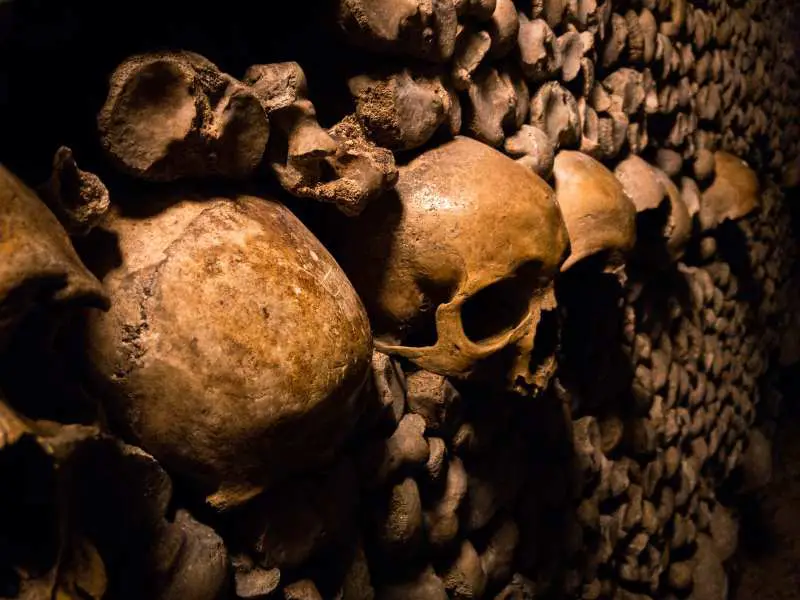
Time for some weird facts in Paris. Did you know…
There are 200 miles of underground tunnels in Paris
The Catacombs of Paris was used as a burial site during the 18th century, due to the overflowing of cemeteries above ground and the spread of disease.
Officially opened in 1810 and declared a museum in 2013, you can tour this area as part of the official tour groups that run daily. However do note that much of the catacombs remain inaccessible, unmapped, and uncharted territory and only 200 people are allowed underground a time.
Reports exist about secret groups using the underground for various activities. In 2004, authorities found a restaurant, bar, a movie theatre in the depths of the catacombs accompanied with a note that read, “do not try to find us.”
To this day the police have never found out who or what was taking place down there.
The Catacombs house the remains of over 6 million Parisians
The walls are lined with bones and skulls. Are you brave enough to take a stroll underground among the remains of millions of people?
It get’s crazier…
The bones are arranged in decorative displays
Many of the bones weren’t simply thrown into the catacombs. Workers often arranged the bones into shapes and decorations and lining the walls with skulls.
One of the most shocking displays, referred to as the Barrel, is a large, circular pillar surrounded by skulls and other ghastly remains which also acts as a support for the roof of the area.
The Catacombs were also used by both sides throughout World War II.
The Louvre Pyramid is formed by 666 glass sheets
This pyramid found in front of the Louvre was completed in 1989, standing 21 metres high, and is one of the newest additions to the museums.
There are 14 abandoned underground metro stations
Many of the city’s metro stations were sealed off during World War II and a handful of them have remained shut ever since now listed as abandoned, no longer in use, or never used. It is illegal to visit them except when a few are open to the public on heritage days.
The Croix-Rouge metro in the Latin Quarter is the most famous of the abandoned group while others are used as a film set or for storage and maintenance of the underground trains.
Père Lachaise in Paris is the world’s most visited cemetery
This cemetery, the resting place for some of the most famous musicians, writers, and poets such as Jim Morisson, Oscar Wilde, Chopin, and Edith Piaf, receives over 3.5 million visitors each year.
Paris fashion law banned women from wearing trousers
The French Revolution made it illegal for women to wear trousers, unless obtaining permission from a police officer to do so. While Parisian women have been wearing pants for decades without any problems, the 214-year-old law wasn’t officially abolished until 2012.
The French army still use carrier pigeons
Despite the advancement in technology, the French army still keeps pigeons that are trained to transmit and carry important messages.
It is considered a necessity and as an alternative in case of the major breakdown in conventional technology. They can be found within the barracks of the 8th Transmissions Regiment in Mont-Valérien.
A secret group breaks into historic sites around Paris to secretly repair them
This organisation called “Les UX” meaning Urban eXperiment works to improve the city by breaking into historic monuments and sights to repair them. They also have been known to build underground cinemas and host other events.
Remember Ratatouille? Well, listen to this one…
There are more than 4 million sewer rats lurking in the sewers under the city
Last one: Have you heard this crazy Paris fact?
Paris syndrome actually exists and is a severe form of cultural shock
Each year, a handful of tourists on a tour of Europe experience shock and a breakdown on the realization that Paris is not what they had expected it to be.
This serious disorder is referred to as “Paris Syndrome” with symptoms include anxiety, depersonalization, acute delusions, and feelings of persecution.
I hope you enjoy your time in Paris as much as learning about this French city through these fun facts about Paris.
Tell me guys, which destination would you like to hear about next?
Until the next set of awesome, cool, interesting, and fun Paris facts for kids….
Au revoir les amis!
Rai
>> Read next in this series:
- 100 facts about Mexico that’ll blow your mind
- Dominican Republic facts worth knowing about this Caribbean island
- Hawaii facts that will keep you enticed
- Learn more about French Polynesia with these fascinating Bora Bora facts
- Facts about Dubai: from the weird to the wonderful
- 50 rare wanderlust words perfect for the travel lover in you



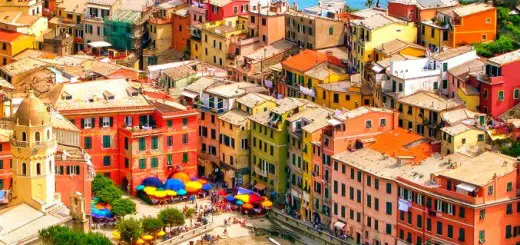
 New Here?
New Here? 







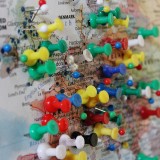




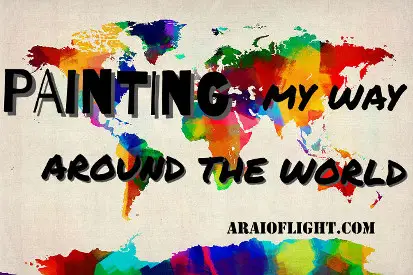
very nice thanks so much for sharing. I learnt a lot about Paris
You are welcome. Thanks for reading!
Lots of good info about Paris here!
Good to hear.. Thanks F